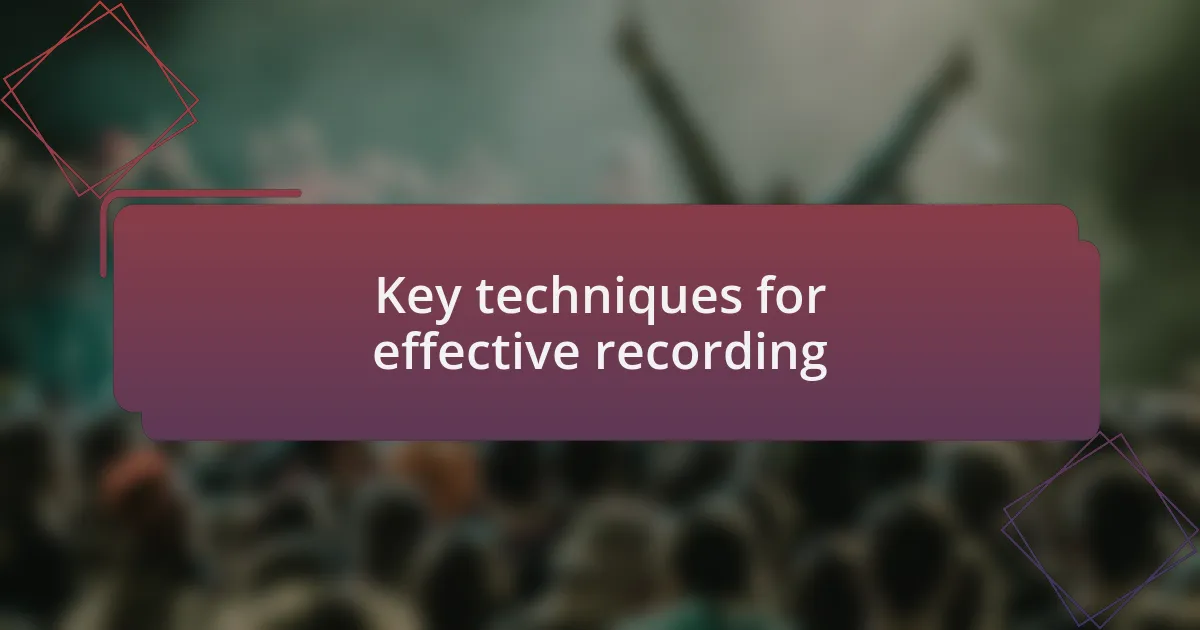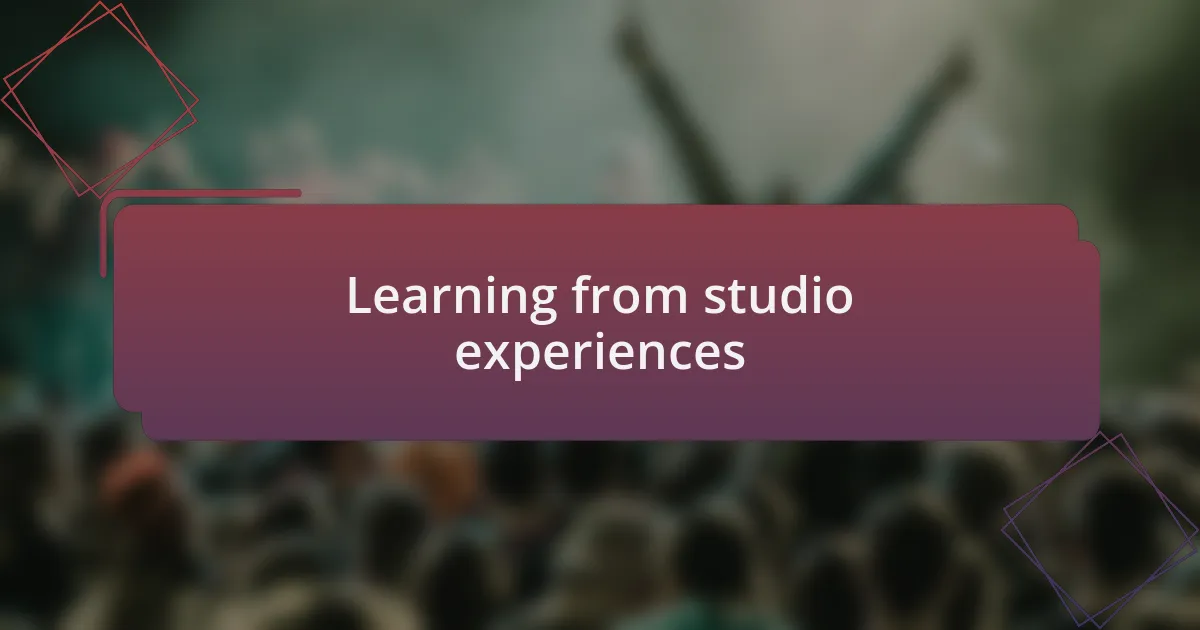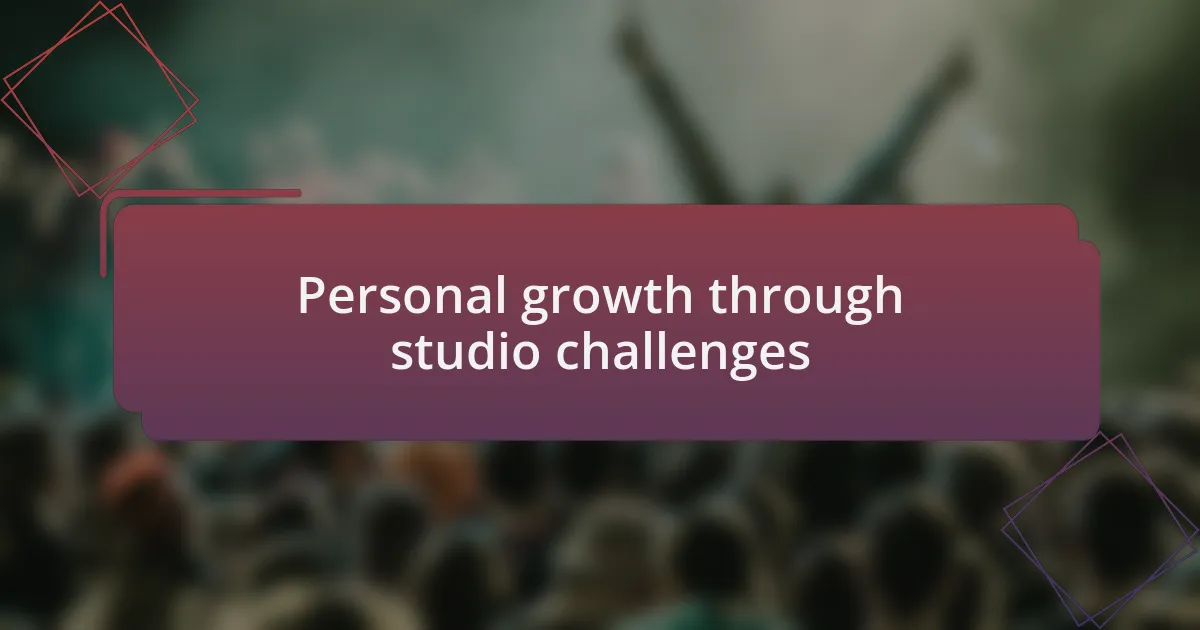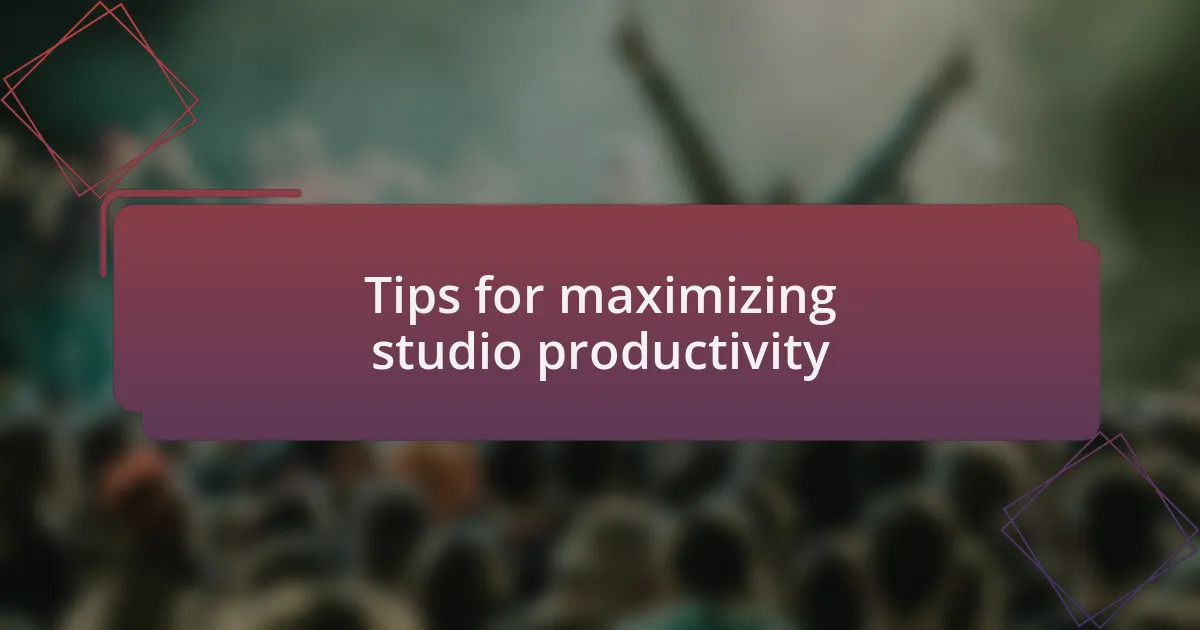Key takeaways:
- Proper mic placement and pre-production planning significantly enhance recording quality and efficiency.
- Collaboration and adaptability in the studio can lead to unexpected and enriching outcomes.
- Preparation, clear agendas, and taking breaks are essential for maximizing studio productivity.

Key techniques for effective recording
When it comes to effective recording, one technique I’ve found invaluable is the use of proper mic placement. I remember the first time I experimented with positioning my microphone closer to the amp; the difference was incredible. It was as if the guitar’s raw power came to life in the mix. Have you ever thought about how even slight adjustments can dramatically change the vibe of a track?
Another essential technique is to establish a solid pre-production plan. From my experiences, having a clear vision and outlined arrangements before hitting the studio saves not only time but also a lot of frustration. I recall a session where we went in without a defined structure and ended up wasting hours on re-records. What’s your take on having a preset game plan?
Lastly, don’t underestimate the power of using dynamic range compression. When I first learned to use compression strategically, it opened up a whole new world in mixing. I noticed that my tracks started to sound fuller and more polished, which, in turn, made them more engaging. Have you experimented with different levels of compression in your recordings?

Learning from studio experiences
The studio is where I truly learned the importance of patience. There was a session where we spent hours perfecting a single line of vocals. At first, it felt tedious, but by the end, I realized that this painstaking attention to detail is what elevated our song to another level. Have you ever felt that the extra time spent can transform something good into something great?
Another lesson I picked up in the studio was the value of collaboration. I remember a moment when a fellow band member suggested a subtle change to the rhythm section that I initially resisted. But as soon as we tried it, I was blown away by how it enriched the overall sound. Isn’t it fascinating how the input of just one person can reshape a whole track?
Finally, the unpredictability of the studio environment taught me to embrace spontaneity. One time, a guitar track didn’t come out as expected, and we improvised a new melody on the spot. That unplanned moment became one of the highlights of the album, reminding me that sometimes the best outcomes emerge from mistakes. Have you had similar unexpected discoveries in your own projects?

Personal growth through studio challenges
Overcoming studio challenges has been pivotal for my personal growth. I vividly recall one session where we faced an audio malfunction just minutes before recording a crucial track. Instead of succumbing to frustration, I learned to adapt, devising a workaround that not only salvaged the day but also led to a unique sound that defined our album. Have you ever had to think on your feet in a creative moment?
Navigating tension within the band during a session has been another vital lesson on personal growth. There was a heated debate about the direction of a song, and it forced me to confront my own defensiveness. This experience taught me the importance of vulnerability and the power of open communication. When was the last time you had to let your guard down for the sake of collaboration?
Finally, I’ve found that pushing through discomfort in the studio leads to profound self-discovery. There were days when recording felt like an emotional rollercoaster, especially when a performance didn’t match my expectations. These experiences, however, helped me build resilience and a more profound appreciation for the creative process. Don’t you think that facing our artistic fears can ultimately make us stronger musicians?

Tips for maximizing studio productivity
When it comes to maximizing studio productivity, preparation is crucial. Before a session, I make sure to have all our gear in check and set up ahead of time. I remember a particularly chaotic day when we arrived at the studio only to discover a missing mic. By planning ahead, I could have avoided that hiccup. How often do you check your gear before a big recording day?
Another key tip is to establish a clear agenda for each session. During one memorable recording, we spent too much time figuring out what to tackle first, which led to frustration and wasted energy. I learned that setting specific goals not only keeps the flow smooth but also ensures everyone stays motivated. What strategies do you use to keep your sessions focused?
Lastly, don’t underestimate the power of taking breaks. In one intense session, we pushed through for hours, but the result was diminishing returns—tired minds and strained voices. It became clear that short breaks actually boost creativity and productivity. Have you ever noticed how a quick break can reignite your inspiration?